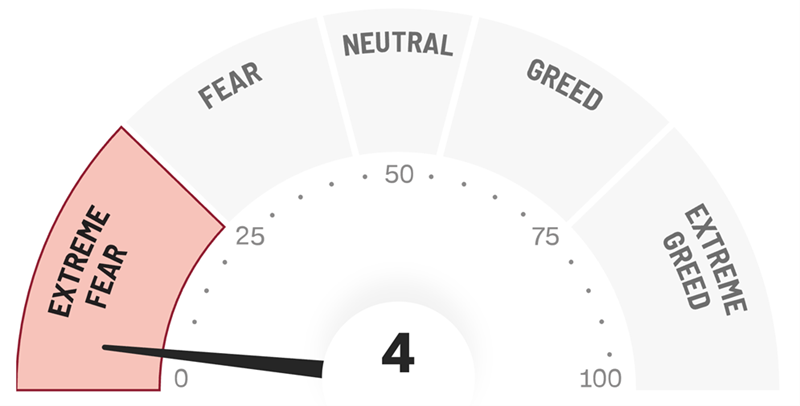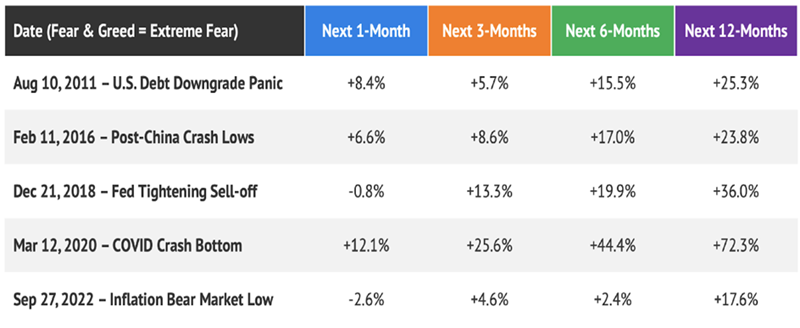“Americans prepping for retirement aren’t watching the markets,” Treasury Secretary Scott Bessent said on Sunday.
Sure, we income investors have it better than most hopeful and current retirees. We do not rely on stock prices for income, per se. Our dividend portfolios provide us with cash flow that we use to pay our bills.
Imagine living by the “4% withdrawal rule” right now, selling 4% of our stocks every year, hoping we don’t run out of money—while the S&P 500 is dropping 4% every day as Wall Street battens down the hatches for a global recession or worse?
Last time we checked in on 4% rule creator and MIT grad and all-around smart guy William Bengen in 2022, he was sweating out his retirement. Poor Billy B. was then cutting back on restaurants. Post-Liberation Day, our man may be eating ramen noodles and frozen spinach!
Our dividend portfolios, while better insulated from the tariff volatility than MAG 7 stocks, are not impervious to declines either. Much to Bessent’s surprise, we do watch the markets because our mission is to retire on dividends and keep our principal intact. And while it’s impossible to avoid a losing day, week, month or even year, over multi-year periods, our nest egg grinds higher while our dividends keep churning.
We usually stay fully invested. But we exercise more caution during bear markets because, in steep selloffs, there is nowhere to run.
(And yes, I realize the S&P 500 has not yet officially hit bear market status, defined as a 20% drop from peak to trough using closing prices. That said, this is now a bear market.)
Mere corrections don’t have liquidations like we saw last Friday and into Monday’s session. Waterfall selloffs. Our dividend positions, which had enjoyed “flight to safety” money inflows all year, were whacked alongside everything else in the financial markets for a couple of days.
In the short term, this shows that investor capitulation is near. When our safe stuff gets hit, it is typically the end of a downside move. At least for now.
But in the long term, the price tantrum we have seen since the Liberation Day tariff announcement is no joke. The bear is back, and things may stay nasty for the rest of 2025.
In bear markets, the return of capital is crucial. Back in 2022, we successfully navigated similar turbulent waters together, reminding ourselves: “Cash is king,” “sell into rallies,” and “protect your principal above all else.” These principles are just as valid today.
To be honest, I didn’t think we would need them so soon! I’m old enough to remember when we saw one bear market per decade. This is already the third for the “roaring twenties”—we had a quick bear in 2020 that was extinguished early by money printing, an “orderly” drop in stocks and bonds throughout 2022, and now a third bear in April 2025.
Stanley Druckenmiller—arguably the investing GOAT—weighed in on X over the weekend in literally his fifth tweet ever. HE warned: “I do not support tariffs exceeding 10%—this path risks recession.”
This bear is still young, and it’s impossible to know how severe it will be. Don’t tell Bessent, but we will—wait for it—watch the market for clues.
Big picture, until the bear exits, caution will be crucial. Let’s review our bear market mantra:
- Stay calm and vigilant: Resist panic selling – cash out on bear market rallies.
- Prepare for short-term rallies: Use these to strategically unload stocks most vulnerable to recession and tariff disruptions.
- Prioritize protection: Capital preservation is our primary objective.
Remember the lessons of 2022: Bear markets aren’t for heroes—they’re for prudent investors who live to invest another day. Cash positions, defensive holdings, and selective buys during extreme sentiment lows are our best tools.
And about that sentiment—it rarely gets worse than this. CNN’s Fear and Greed Index hit 4 out of 100:

I’ve never seen it this low. (If you have a lower screenshot, please send along!)
Forward returns for the S&P 500 from these washed-out FGI levels are excellent. See below. Over nearly every time window, profits followed:
Forward Returns When FGI Reads Extreme Fear

It is nearly impossible to see now, but we will get a catalyst that will spark a market pop. The trick will be figuring out what to do with it. In 2020, we bought a “reaction rally” with the intent to sell, but we never had to. In 2022, we were fortunate enough to unload positions ahead of time and then again on the first bear bounce higher.
I wish I had the 2025 script in front of me. I don’t, and, of course, nobody does. I will warn you now that we will sell positions, and it won’t feel good because there will be a temptation to “wait” for a position to recover. As contrarians, it is painful to sell when the FGI is 4. We feel compelled to “hold on” to everything for a turn.
In bear markets, however, we sell without hesitation to protect our capital. We can buy the position back later—often at a lower price. It is how we protect our principal and, in doing so, our future income streams. Because if we don’t look out for ourselves, who will?
Disclosure: Brett Owens and Michael Foster are contrarian income investors who look for undervalued stocks/funds across the U.S. markets. Click here to learn how to profit from their strategies in the latest report, "7 Great Dividend Growth Stocks for a Secure Retirement."
